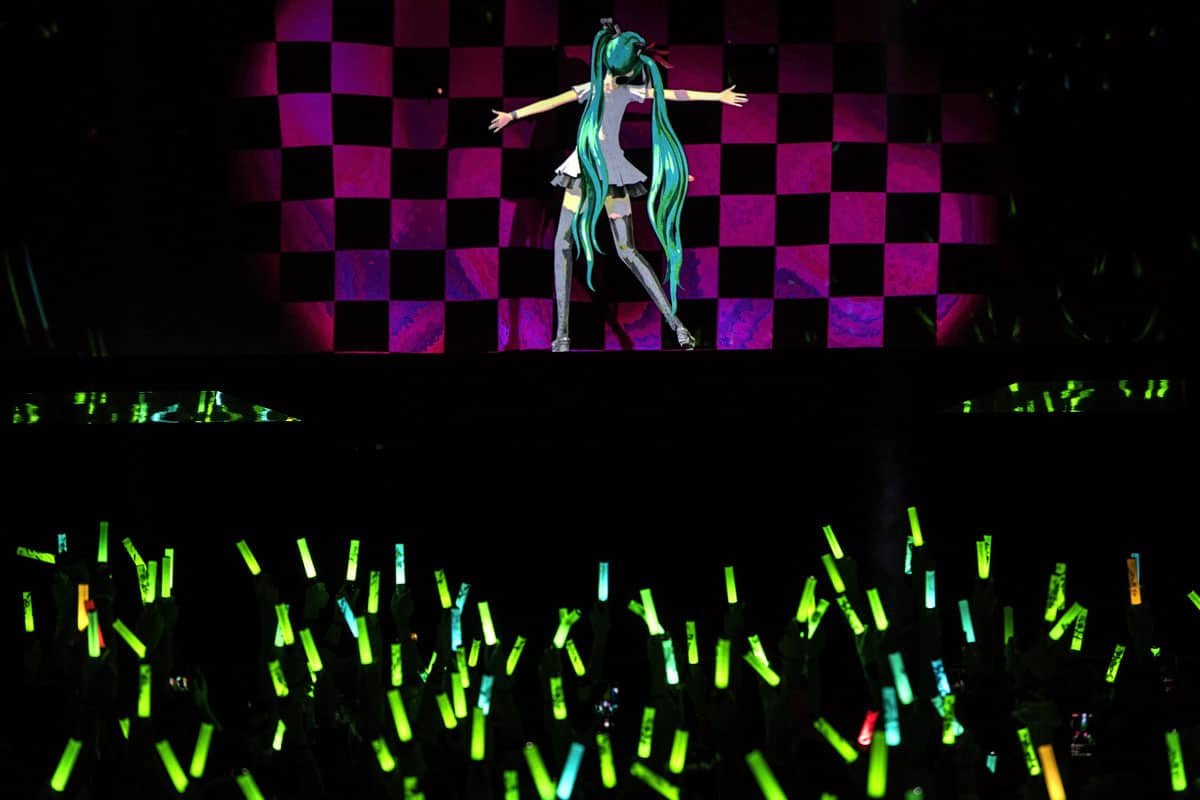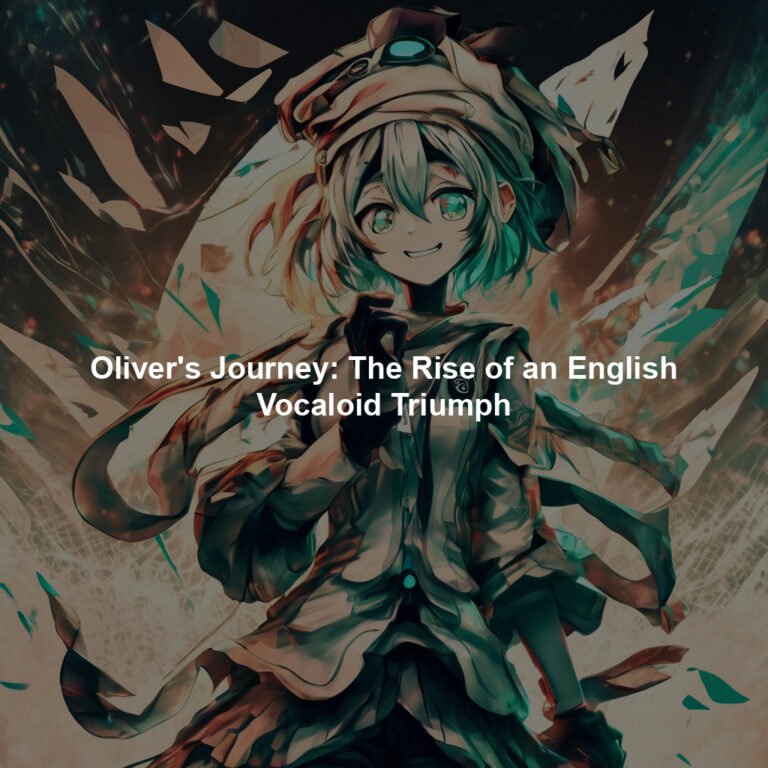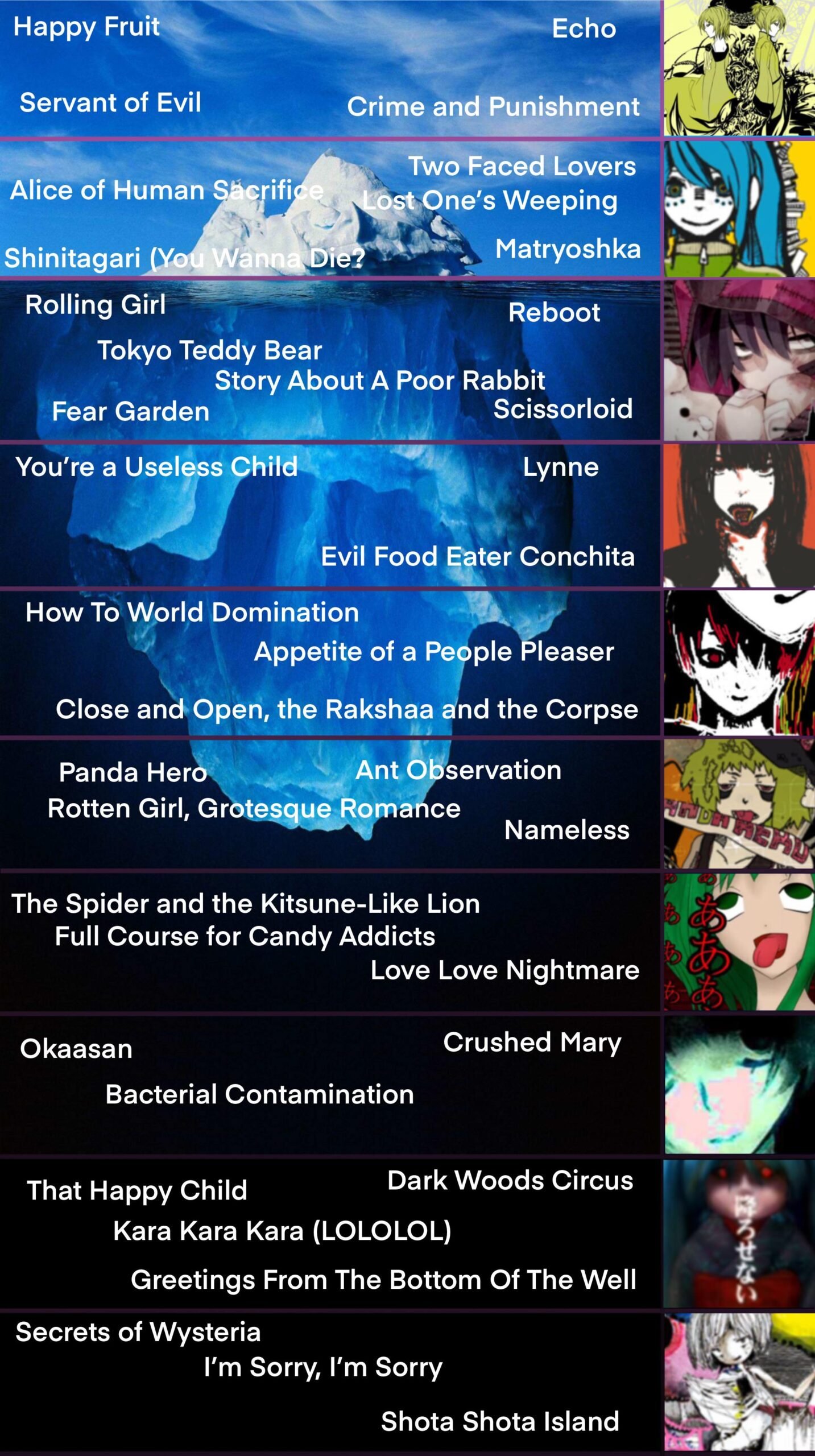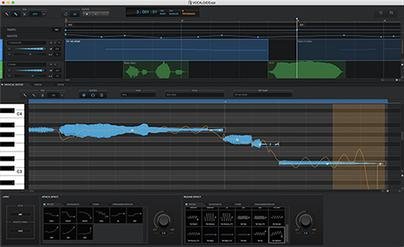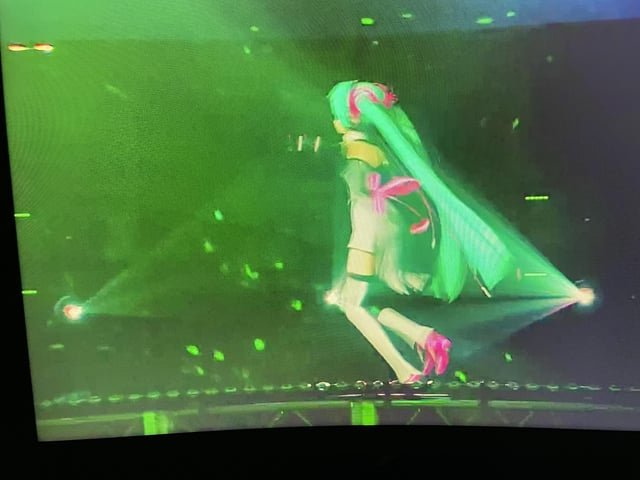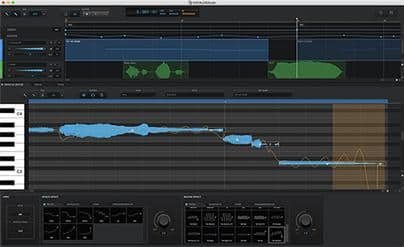Vocaloid concerts have changed a lot over the years. What started as simple 2D animations has now become stunning hologram shows.
This evolution in technology has made these concerts more exciting and real for fans. Vocaloid concerts began with digital singers on screens. Fans loved these virtual performances, but they wanted more. As technology advanced, so did the concerts. Holograms brought the characters to life in ways never seen before.
Now, fans can see their favorite Vocaloid characters in 3D, moving and singing on stage. This shift from 2D to holograms has transformed the experience, making it more immersive and engaging. It shows how far technology can take us in creating unique and memorable entertainment. Join us as we explore the journey of Vocaloid concerts from their humble beginnings to their high-tech present.
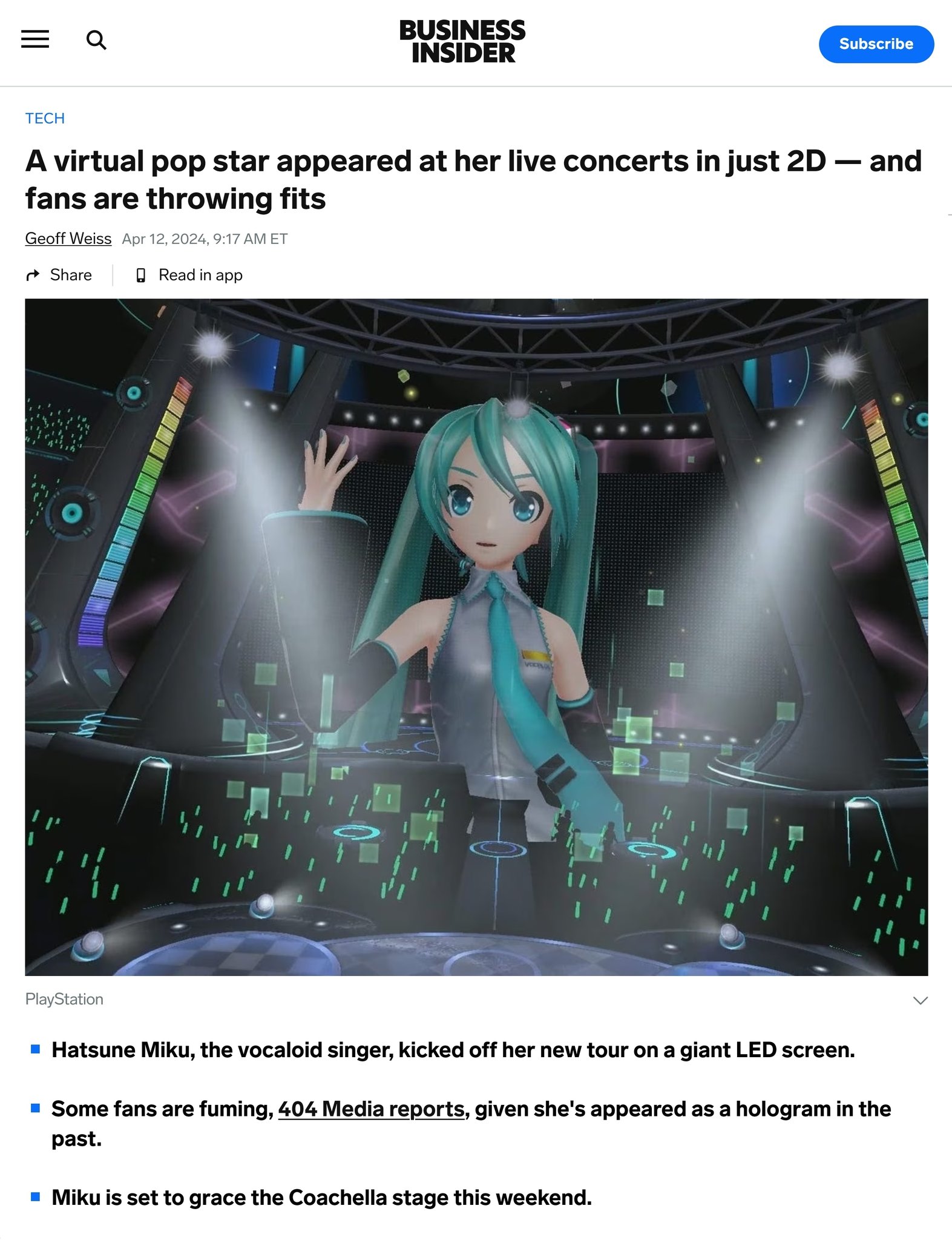
Credit: x.com
Introduction To Vocaloid Concerts
Vocaloid concerts have evolved from simple 2D projections to stunning hologram performances. Fans now enjoy lifelike digital idols on stage. This shift brings a new level of excitement to music events.
The world of Vocaloid concerts has evolved dramatically. From simple animations to advanced holograms, these concerts have captivated fans globally. Vocaloid concerts are unique in the music industry. They feature virtual singers powered by computer software. These digital idols perform on stage, singing songs created by music producers.Origins Of Vocaloid
Vocaloid began as a voice synthesizer program developed by Yamaha. The first version was released in 2004. It allowed users to create songs using virtual singers. These singers had distinct voices but no physical presence. The software gained popularity quickly. Fans loved the idea of creating music with virtual characters.Early Concerts
Early Vocaloid concerts were basic. They used 2D animations on large screens. The characters moved and sang, but there was no depth. Fans still enjoyed these shows. They were excited to see their favorite virtual singers perform. The technology was impressive for its time. Yet, there was room for improvement. The industry sought more realistic performances. This led to the development of holographic technology.
Credit: www.jame-world.com
Technological Innovations
Technological innovations have transformed Vocaloid concerts from simple 2D projections to immersive holographic experiences. These advancements have brought virtual idols closer to their audiences. Let’s explore the key technological strides that made this possible.
Development Of Vocaloid Software
The journey began with the development of Vocaloid software. This software allowed the creation of synthetic voices. Musicians could now compose songs using virtual singers. The early versions had limited capabilities, but they set the stage for future innovations. Over time, the software became more advanced. It started mimicking human voices with greater accuracy. Vocaloid 3 and Vocaloid 4 introduced new features. These versions allowed more natural sounding vocal performances. The software’s evolution enabled more expressive and dynamic singing.
Advancements In Concert Technology
Concert technology also saw significant improvements. Initially, Vocaloid concerts featured 2D projections on flat screens. These concerts were captivating but lacked depth. The next leap came with 3D projection mapping. This technique created the illusion of depth and made the characters appear more lifelike. The real game-changer was the use of holograms. Holographic technology brought virtual idols to the stage in three dimensions. Fans could now experience their favorite idols as if they were real. This technology uses lasers and mirrors to create 3D images. These images can be viewed from different angles, enhancing the live experience.
The combination of advanced software and holographic technology has set a new standard for Vocaloid concerts. Each concert now promises a more immersive and engaging experience for fans.
From 2d To 3d
The journey from 2D to 3D in Vocaloid concerts is fascinating. It showcases the blend of technology and creativity. Early Vocaloid concerts started with simple 2D animations. They have now evolved into stunning 3D holographic performances. This transformation has made Vocaloid concerts more immersive and enjoyable.
First 2d Concerts
The first Vocaloid concerts featured 2D animations on large screens. These concerts were simple but revolutionary. Fans were thrilled to see their favorite virtual idols perform live, even in 2D. The concerts used pre-recorded vocal tracks and basic animations. The focus was mainly on the music and the character’s voice.
Despite the simplicity, these concerts had a special charm. They brought the Vocaloid community together. Fans could sing along and enjoy the music in a new way. The success of these concerts paved the way for future innovations.
Transition To 3d Models
The next big step was the introduction of 3D models. These models were more lifelike and dynamic. They allowed for more complex and realistic movements. The 3D models could dance, interact with the audience, and even show emotions.
The use of 3D models required advanced technology. It involved motion capture and high-quality graphics. These concerts were more visually appealing. They provided a more engaging experience for the fans.
One notable example is Hatsune Miku’s 3D concerts. They used holographic technology to project 3D models on stage. This gave the illusion of a live performance by a virtual idol. The concerts were a huge success and set a new standard for Vocaloid performances.
The transition from 2D to 3D has made Vocaloid concerts more exciting. It has opened up new possibilities for the future of virtual performances.
Rise Of Holographic Performances
Vocaloid concerts have evolved from 2D animations to stunning holograms. Fans now enjoy lifelike performances by virtual singers. This technology brings a new level of excitement to live shows.
The rise of holographic performances has transformed Vocaloid concerts. This new technology has brought virtual idols to life in a way that was once only a dream. Fans now experience their favorite characters in 3D space, creating a more immersive experience.Introduction Of Holograms
Holograms were first introduced in Vocaloid concerts in the early 2010s. These 3D projections allowed virtual idols to perform on stage as if they were real. The technology used a combination of screens and projectors to create the illusion of depth. This innovation changed the way audiences experienced virtual performances. Holographic concerts became popular quickly. They provided a unique blend of technology and entertainment. Fans were amazed by the lifelike movements and expressions of their favorite characters. The introduction of holograms marked a significant step in the evolution of Vocaloid concerts.Impact On Audience Experience
Holographic performances have had a huge impact on audience experience. Fans feel more connected to the virtual idols. The lifelike presence of the characters makes the concerts feel more personal. This connection enhances the overall experience. Audiences are also treated to stunning visual effects. Holograms create a sense of realism that 2D screens cannot match. The detailed animations and vibrant colors captivate the audience. This visual spectacle adds an extra layer of excitement to the concerts. The use of holograms has also expanded the reach of Vocaloid concerts. Virtual idols can perform in different locations at the same time. This allows fans from all over the world to enjoy the performances. The rise of holographic performances has truly revolutionized Vocaloid concerts. “`Iconic Vocaloid Characters
The evolution of Vocaloid concerts has given life to some of the most iconic characters in the virtual music world. These characters are not just software; they are beloved figures with their own personalities and fanbases. Let’s dive into the most popular Vocaloid characters that have graced the stage, from 2D screens to holograms.
Hatsune Miku
Hatsune Miku is the face of Vocaloid. She debuted in 2007 and quickly became a cultural phenomenon. With her long turquoise twin-tails and futuristic outfit, she is instantly recognizable. Miku’s concerts have evolved from simple 2D projections to stunning holographic performances. Her songs, ranging from pop to techno, showcase her versatile voice. Fans love her for her energetic performances and unique charm.
Kagamine Rin And Len
Kagamine Rin and Len are another iconic duo in the Vocaloid universe. They are known as the “mirror images” of each other, with Rin often depicted in a more feminine role and Len in a masculine one. They have been featured in numerous songs and concerts, often performing as a pair. Their holographic shows bring their characters to life, making fans feel as if they are watching real performers. The dynamic between Rin and Len adds a layer of interaction that fans find captivating.
Global Reach And Popularity
The Evolution of Vocaloid Concerts has brought a phenomenal global reach and popularity to these unique events. From humble beginnings, Vocaloid concerts have captivated audiences worldwide. Let’s explore how these concerts have gained international fame and fostered fan communities across the globe.
International Concerts
Vocaloid concerts are no longer confined to Japan. They have reached many countries, including the United States, France, and China. These concerts offer fans a chance to see their favorite virtual idols live. The use of hologram technology makes these events extraordinary.
The first international Vocaloid concert took place in Los Angeles in 2011. It was a huge success and attracted thousands of fans. Since then, Vocaloid concerts have been held in many major cities around the world.
| Year | Country | City |
|---|---|---|
| 2011 | USA | Los Angeles |
| 2013 | France | Paris |
| 2016 | China | Shanghai |
Fan Communities Worldwide
Fan communities have played a key role in spreading the popularity of Vocaloid concerts. Fans from different cultures come together to celebrate their love for virtual idols. Social media platforms have helped fans connect and share their experiences.
Some popular platforms where fans interact include:
- Facebook Groups
- Twitter Hashtags
- Reddit Communities
These platforms allow fans to discuss concert experiences, share fan art, and more. They create a sense of belonging and excitement among fans.
Fan meetups and conventions also contribute to the growth of these communities. Events like Anime Expo and Japan Expo often feature Vocaloid performances and panels. These gatherings strengthen the bond among fans and expand the Vocaloid fandom.
Challenges And Criticisms
The evolution of Vocaloid concerts from 2D screens to holograms has brought both excitement and challenges. Fans love the immersive experience, but there are issues that need addressing. Let’s dive into the challenges and criticisms faced by these cutting-edge performances.
Technical Difficulties
Vocaloid concerts rely heavily on advanced technology. This includes high-quality projectors and sound systems. Any glitch can ruin the experience. Technical malfunctions can disrupt the entire show. Sometimes, the hologram may not sync with the music. Or worse, it may disappear altogether. Ensuring smooth and flawless execution is a big challenge.
Artistic And Ethical Concerns
Artistic integrity is another concern. Some argue that holograms lack the soul of live performers. They believe that real artists bring unique emotions to the stage. Ethical issues also come into play. Is it right to profit from a digital creation? Does it undermine human musicians? These questions need careful consideration.
Moreover, there is the issue of copyright. Vocaloid characters are intellectual property. Using them in concerts requires permission. Unauthorized use can lead to legal troubles. Balancing creativity with respect for original creators is crucial.
Future Of Vocaloid Concerts
The future of Vocaloid concerts promises exciting innovations. As technology advances, so do the possibilities for these unique performances. Fans can expect even more immersive experiences. Let’s explore the future of Vocaloid concerts.
Potential Technological Advancements
New technologies will likely enhance Vocaloid concerts. Holograms may become more realistic. Imagine lifelike avatars performing on stage. Augmented reality could bring concerts to fans’ homes. Virtual reality might offer interactive experiences. These advancements can make concerts more engaging.
Evolving Audience Expectations
Fans’ expectations will continue to evolve. They want more interaction. They seek unique experiences. Personalized concerts could become common. Fans may vote for setlists. They might interact with avatars in real-time. These changes can make concerts more memorable. The future of Vocaloid concerts looks bright.

Credit: www.news.viverse.com
Frequently Asked Questions
What Is A Vocaloid Concert?
A Vocaloid concert features digital singers created using Vocaloid software. These concerts have virtual idols performing on stage.
How Do Vocaloid Hologram Concerts Work?
Vocaloid hologram concerts use advanced projection technology. This creates 3D holographic images of the virtual singers performing live.
Who Are The Most Popular Vocaloid Characters?
Hatsune Miku, Kagamine Rin and Len, and Megurine Luka are among the most famous Vocaloid characters.
When Did Vocaloid Concerts Start?
Vocaloid concerts began in 2009. Hatsune Miku’s first live concert marked the beginning of this unique entertainment form.
Conclusion
Vocaloid concerts have transformed significantly over the years. From 2D projections to advanced holograms, technology has brought these performances to life. Fans now enjoy immersive, interactive experiences. The future holds even more exciting advancements. Vocaloid concerts will continue to evolve.
Artists and fans eagerly await what’s next. These shows blend art and technology, creating unique experiences. Vocaloid’s journey is far from over. Concerts will keep pushing boundaries. Stay tuned for the next big leap in this fascinating world.
{ “@context”: “https://schema.org”, “@type”: “FAQPage”, “mainEntity”: [ { “@type”: “Question”, “name”: “What is a Vocaloid concert?”, “acceptedAnswer”: { “@type”: “Answer”, “text”: “A Vocaloid concert features digital singers created using Vocaloid software. These concerts have virtual idols performing on stage.” } } , { “@type”: “Question”, “name”: “How do Vocaloid hologram concerts work?”, “acceptedAnswer”: { “@type”: “Answer”, “text”: “Vocaloid hologram concerts use advanced projection technology. This creates 3D holographic images of the virtual singers performing live.” } } , { “@type”: “Question”, “name”: “Who are the most popular Vocaloid characters?”, “acceptedAnswer”: { “@type”: “Answer”, “text”: “Hatsune Miku, Kagamine Rin and Len, and Megurine Luka are among the most famous Vocaloid characters.” } } , { “@type”: “Question”, “name”: “When did Vocaloid concerts start?”, “acceptedAnswer”: { “@type”: “Answer”, “text”: “Vocaloid concerts began in 2009. Hatsune Miku’s first live concert marked the beginning of this unique entertainment form.” } } ] }
